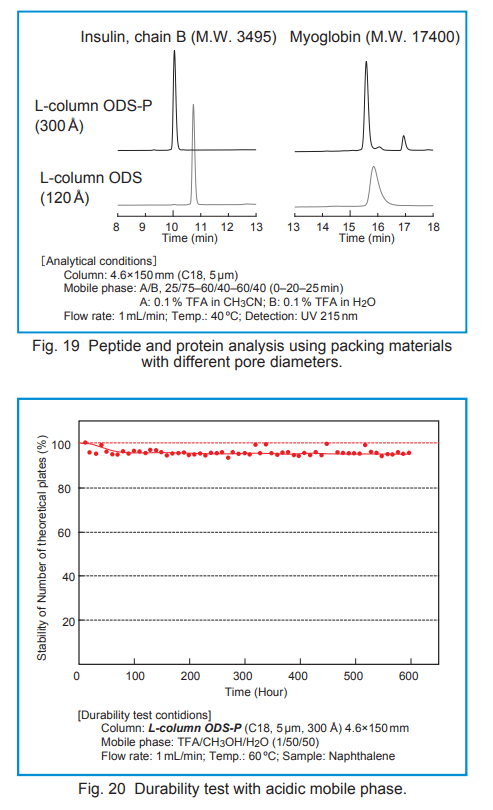L-column ODS-P is ideal for the analysis of proteins and peptides. The base silica has a pore diameter of 300Å. Adsorption is minimized and proteins and peptides elute with sharp peaks. Biological samples are often analyzed using 1 % TFA in the mobile phase and L-column ODS-P is exceptionally stable in strongly acidic eluent.
| Average particle size: | 5µm |
| Average pore size: | 300 Å |
| Surface area: | 150 m2/g |
| Carbon contents: | 9 % |
| Bonded phase: | C18 (Octadecyl) |
| End-capping: | Yes |
| USP category: | L1 |
| Range of pH: | pH 2 – pH 9 |
Role of Pore diameter in protein and peptide analysis
Insulin B chain with a molecular weight of 3495 does not show different peak shape between 120Å pore diameter and 300Å pore diameter (Fig. 19). Retention is determined by carbon load. On the other hand, myoglobin with a molecular weight of 17400 shows a broad peak when analyzed on the 120Å L-column ODS and the main component is not separated from the impurities. Using 300Å L-column ODS-P with 300Å pore diameter, the main component is separated from the impurities with good peak shape. Analytes of molecular weight of approximately 5000 to 20000 are suitable for this column.
High durability
L-column ODS-P can be used in a pH range from 2 to 9. It demonstrates long lifetimes and stable performance in mobile phases containing 1% TFA












